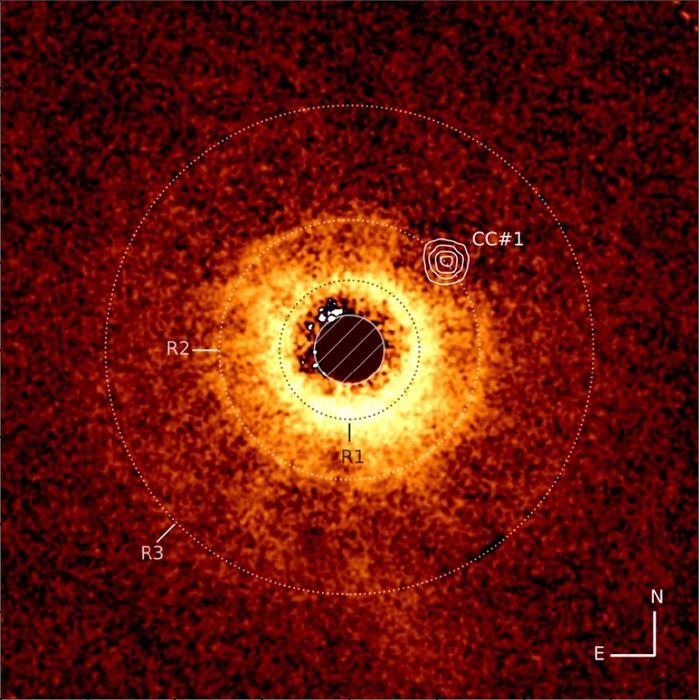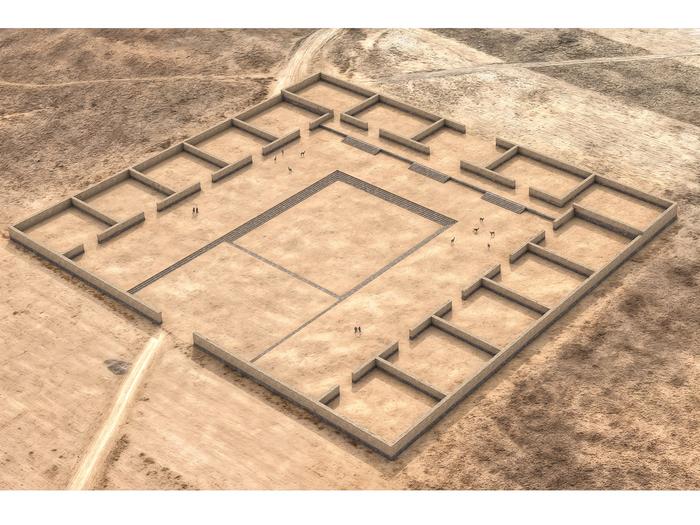Now Reading: James Webb Space Telescope Captures Smallest Exoplanet Ever Seen in Historic First
-
01
James Webb Space Telescope Captures Smallest Exoplanet Ever Seen in Historic First
James Webb Space Telescope Captures Smallest Exoplanet Ever Seen in Historic First

The search for exoplanets is one of the most important goals of astronomers in the 21st century. Exoplanets can provide us with crucial information about how planets form and help us understand our own planet a little better.
For the very first time, the James Webb Space Telescope (JWST) has successfully assisted in the discovery of a new exoplanet. This exoplanet, known as TWA 7 b, is described in Nature as being located in the debris disk of a star and having the smallest mass of any planet observed via direct imagery. The discovery is an exciting scientific development and showcases another way the powerful JWST is changing our view of the universe.
“This observatory enables us to capture images of planets with masses similar to those in our solar system, which represents an exciting step forward in our understanding of planetary systems, including our own,” said co-author Mathilde Malin, of Johns Hopkins University and the Space Telescope Science Institute, in a press release.
A Never-Before-Seen Exoplanet
The newly-discovered exoplanet is about 50 times the distance of Earth from our Sun and is located in the vicinity of a young red dwarf star. It is also comparable in mass to Saturn, being ten times lighter than any exoplanet ever captured and 30 percent the mass of Jupiter.
Infant star systems are ideal places to capture exoplanets, and that’s exactly where TWA 7 b was found. These systems often consist of debris and disks where new planets are formed. One system the JWST had its technologically advanced eye on was TWA 7, a 6.4 million-year-old star that included three distinct rings.
Researchers were especially interested in the narrowest of these three rings that seemed to be surrounded by no other matter. Upon closer inspection and through the use of detailed simulations, the team confirmed the presence of the exoplanet within the heart of the narrow ring.
“Our observations reveal a strong candidate for a planet shaping the structure of the TWA 7 debris disk, and its position is exactly where we expected to find a planet of this mass,” said lead author Anne-Marie Lagrange, CNRS researcher at the Observatoire de Paris-PSL, in the press release.
Read More: JWST May Have Found Strongest Evidence of Life on Exoplanet K2-18b
How Did The JWST Capture An Exoplanet?
Getting a detailed image of an exoplanet, especially one with a small mass, is exceptionally difficult. Although newly formed planets are quite bright, they are not as bright as the star systems that help birth them. Their distance from Earth and their proximity to stars often lead to exoplanets having weak signals that telescopes cannot pick up on.
So, how did the JWST manage to catch the smallest exoplanet ever captured? Scientists created an attachment for the JWST called a coronagraph. Coronagraphs can create a false eclipse, masking a star and allowing the objects around it to emerge. Before the use of coronagraphs, telescopes were only able to capture the effects of an exoplanet rather than provide a direct image.
This direct image of a small-mass exoplanet has opened up an exciting future for the JWST and the field of astronomy. Researchers hope to continue their search for even smaller exoplanets, with the goal of capturing one with 10 percent the mass of Jupiter.
Overall, this galactic achievement highlights the importance of continuing research into exoplanets and improving both space-based and ground-based telescopes.
Read More: From Billions to Trillions Light Years Away, These are the Furthest Stars and Exoplanets From Earth
Article Sources
Our writers at Discovermagazine.com use peer-reviewed studies and high-quality sources for our articles, and our editors review for scientific accuracy and editorial standards. Review the sources used below for this article:
As the marketing coordinator at Discover Magazine, Stephanie Edwards interacts with readers across Discover’s social media channels and writes digital content. Offline, she is a contract lecturer in English & Cultural Studies at Lakehead University, teaching courses on everything from professional communication to Taylor Swift, and received her graduate degrees in the same department from McMaster University. You can find more of her science writing in Lab Manager and her short fiction in anthologies and literary magazine across the horror genre.






















